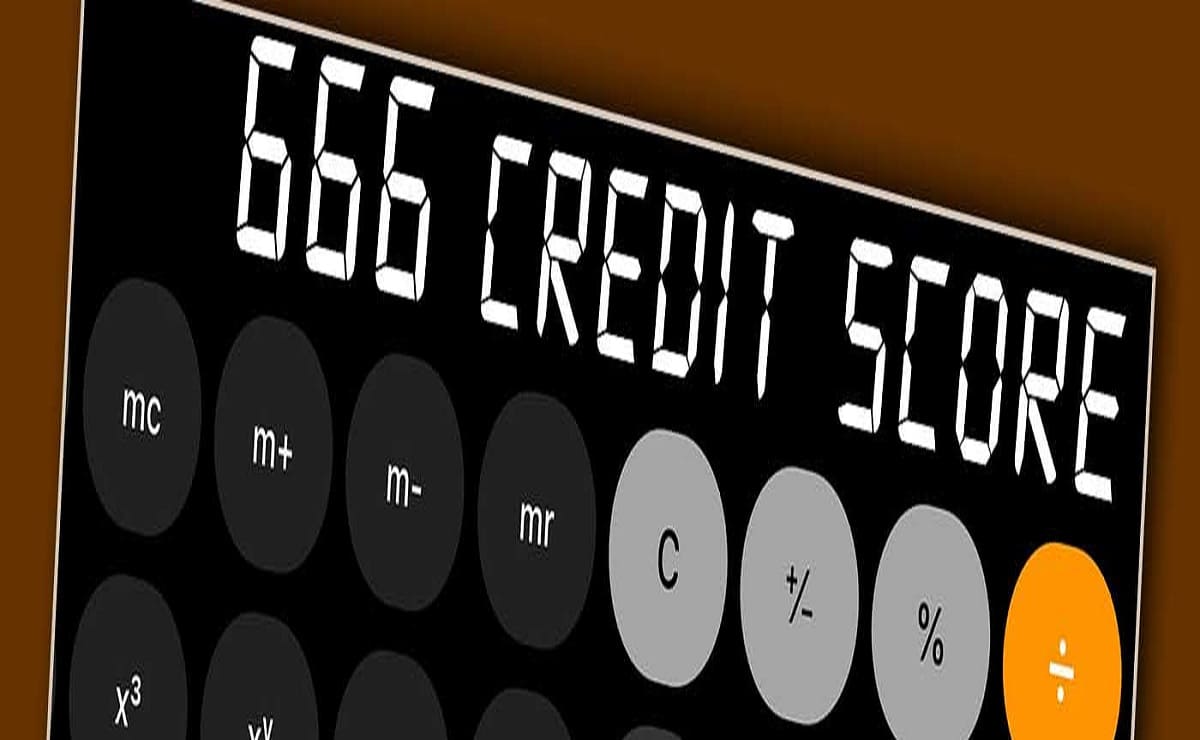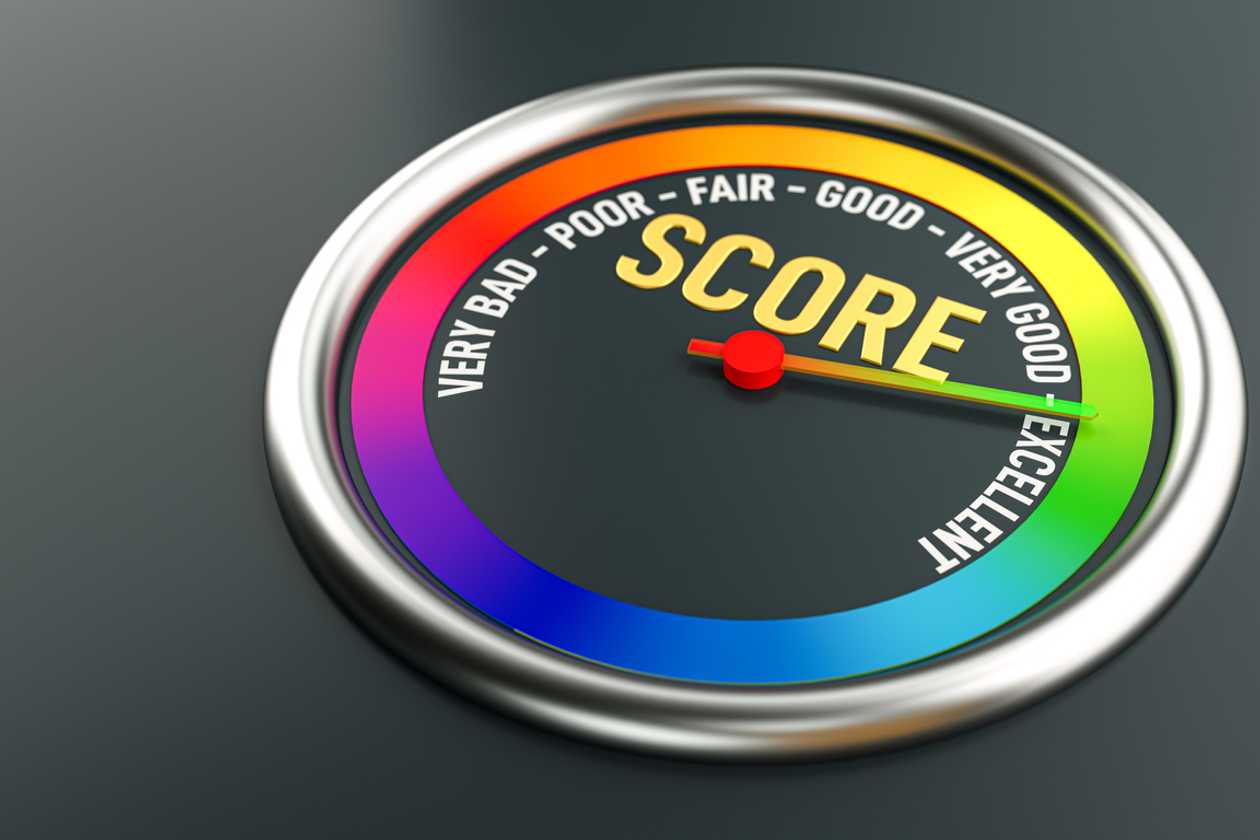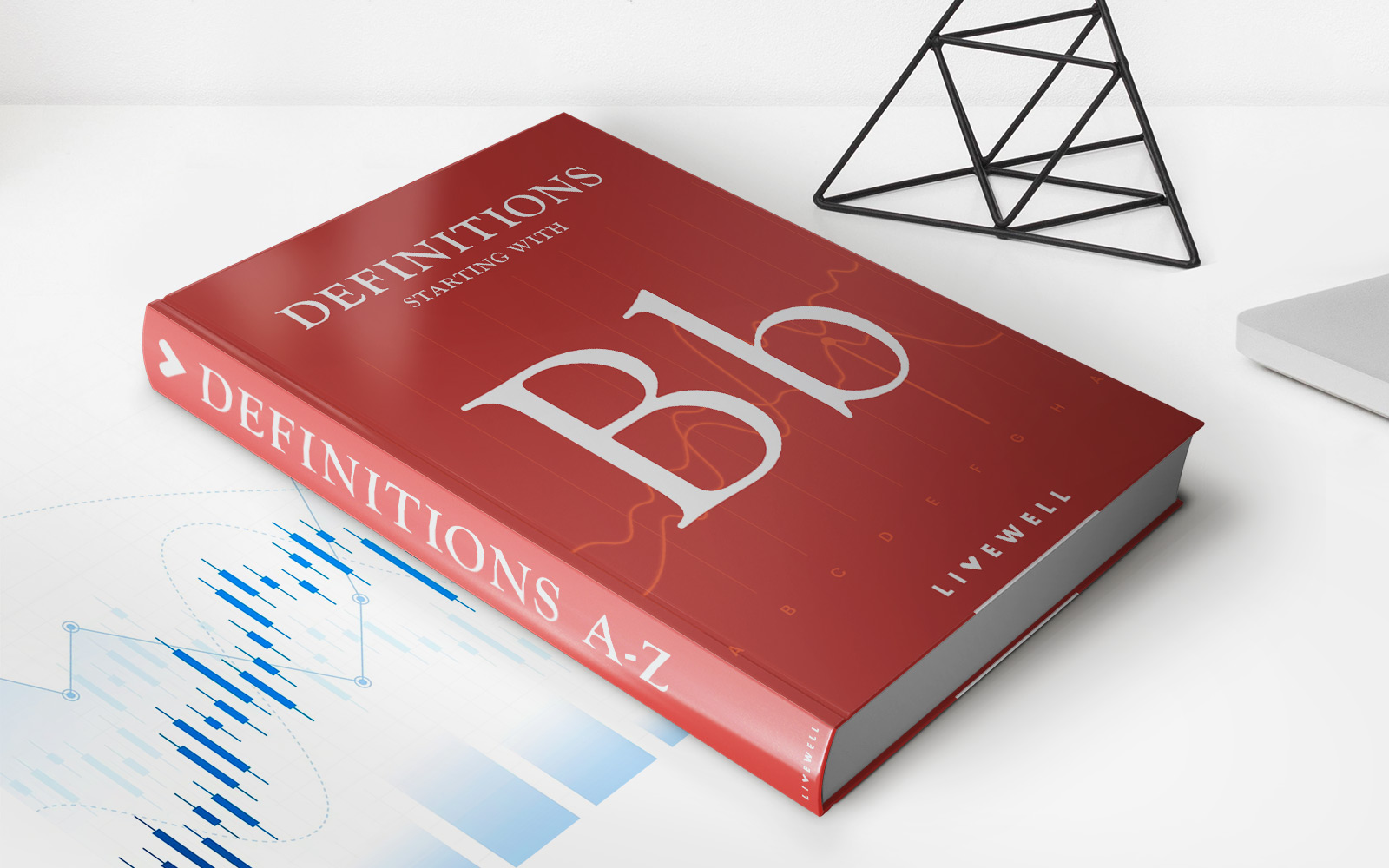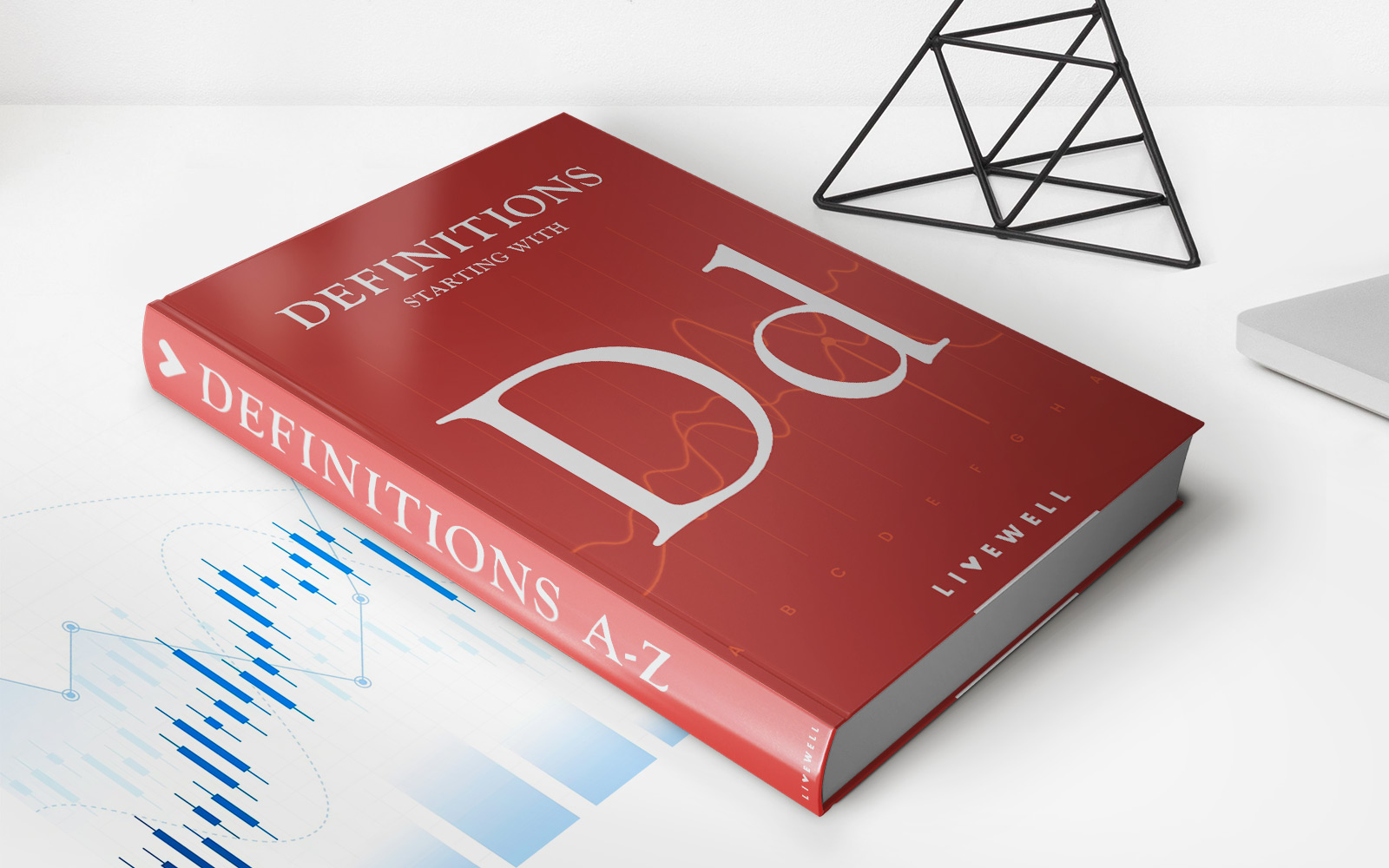

Finance
What Is A 610 Credit Score
Modified: March 6, 2024
Learn what a 610 credit score means for your financial health and how it can impact your ability to secure loans and credit cards. Discover strategies to improve your credit score and achieve your financial goals.
(Many of the links in this article redirect to a specific reviewed product. Your purchase of these products through affiliate links helps to generate commission for LiveWell, at no extra cost. Learn more)
Table of Contents
- Introduction
- What is a Credit Score?
- Understanding Credit Scores
- How is a Credit Score Calculated?
- What Does a 610 Credit Score Mean?
- Factors Affecting a 610 Credit Score
- Tips to Improve a 610 Credit Score
- Common Misconceptions about Credit Scores
- Importance of Monitoring and Maintaining a Good Credit Score
- Conclusion
Introduction
A credit score is a numerical representation of an individual’s creditworthiness. It plays a crucial role in various financial activities, such as obtaining loans, applying for credit cards, and even renting an apartment. Lenders use credit scores to assess the risk associated with lending money to individuals and determine the terms and conditions of these financial arrangements.
One specific credit score that is often talked about is the 610 credit score. If you have a credit score of 610, it is essential to understand what that means and how it can impact your financial life. In this article, we will delve into the world of credit scores and shed light on what a 610 credit score signifies.
Whether you are trying to improve your credit score or curious to learn more about what a 610 credit score entails, this article will provide you with valuable information and insights. Let’s explore the world of credit scores and how a 610 credit score fits into the broader landscape of creditworthiness.
What is a Credit Score?
A credit score is a three-digit number that represents an individual’s creditworthiness. It is a standardized way for lenders to evaluate a person’s ability to repay debt based on their credit history. Credit scores are used by financial institutions, such as banks, credit card companies, and mortgage lenders, to assess the risk of lending money to an individual.
Credit scores can range from 300 to 850, with higher scores indicating a lower risk of default and better creditworthiness. The credit score is calculated based on various factors, including payment history, credit utilization, length of credit history, types of credit, and new credit applications.
Credit scores not only play a significant role in securing loans or credit, but they can also impact other aspects of an individual’s financial life. Landlords may use credit scores to evaluate rental applications, and insurance companies may consider credit scores when determining premiums.
In the United States, credit scores are primarily calculated using models developed by three major credit reporting agencies: Experian, Equifax, and TransUnion. These agencies collect and analyze credit data to determine the creditworthiness of individuals. Each agency has its own proprietary scoring model, resulting in slightly different credit score numbers.
Understanding how credit scores work is crucial for individuals who want to make informed financial decisions and improve their creditworthiness. In the next sections, we will dive deeper into the factors that influence credit scores and specifically focus on the significance of a 610 credit score.
Understanding Credit Scores
It’s essential to have a clear understanding of how credit scores are calculated and what they signify. As mentioned earlier, credit scores are based on several factors that reflect an individual’s creditworthiness.
Payment history is one of the most crucial factors in determining a credit score. It tracks whether a borrower has made timely payments on their credit accounts, such as loans and credit cards. Late payments, defaults, or accounts sent to collections can significantly impact credit scores.
Credit utilization ratio is another significant factor. It represents the percentage of available credit that an individual is using. A high credit utilization ratio can indicate financial strain and may negatively impact the credit score.
The length of credit history is also taken into account. This factor considers how long an individual has been using credit and the age of their credit accounts. Generally, a longer credit history is viewed more positively as it demonstrates a track record of responsible credit management.
The types of credit utilized are also considered. Lenders typically prefer a mix of different credit types, such as credit cards, loans, or mortgages. A diverse credit profile suggests a responsible borrower who can handle various financial obligations.
Lastly, new credit applications and inquiries can affect credit scores. Numerous recent applications for credit can be interpreted as a potential risk, as it may indicate financial instability or a desire to take on excessive debt.
Understanding these components of credit scoring helps individuals comprehend the factors that contribute to their credit score and identify areas they can improve upon. With a thorough understanding of credit scores, let’s dive into the specifics of what a 610 credit score indicates.
How is a Credit Score Calculated?
The calculation of a credit score involves a complex algorithm that takes into account various factors mentioned earlier. While the exact formulas used by credit bureaus are proprietary, the general principles are known.
First, credit reports, which include credit history information, are obtained from the three major credit reporting agencies: Experian, Equifax, and TransUnion. These reports contain details of an individual’s credit accounts, payment history, and other relevant financial information.
The information from the credit reports is then fed into a scoring model to generate the credit score. The most widely used credit scoring models are FICO® Scores and VantageScores.
FICO® Scores, developed by Fair Isaac Corporation, are the most commonly used credit scoring models in the United States. They range from 300 to 850, with higher scores indicating better creditworthiness. Key factors considered in FICO® Scores are payment history, amounts owed, length of credit history, new credit, and types of credit used.
VantageScores, on the other hand, were jointly developed by the three major credit bureaus. They also range from 300 to 850 and use similar factors when calculating credit scores. However, VantageScores may weigh certain factors differently than FICO® Scores.
It’s important to note that different lenders may use different credit scoring models or have their own customized scoring systems. This means that your credit score can vary slightly depending on the scoring model used.
Overall, the exact calculation of a credit score is intricate and relies on complex algorithms. By understanding the general factors considered and maintaining responsible credit habits, individuals can work towards improving their credit scores over time.
What Does a 610 Credit Score Mean?
A credit score of 610 indicates a fair credit standing. While it is not the worst credit score possible, it is still considered below average and may present certain challenges when it comes to obtaining credit or favorable loan terms.
Lenders typically categorize credit scores into different ranges, such as poor, fair, good, and excellent. A 610 credit score falls into the fair range, which means that the individual may have some negative marks on their credit history or may have limited credit experience.
With a 610 credit score, individuals may find it more difficult to qualify for loans or credit cards with competitive interest rates. They may also face limited options and may be required to provide additional documentation or collateral to secure credit.
Additionally, having a 610 credit score can impact other aspects of an individual’s financial life. Landlords may be hesitant to approve rental applications, and insurance companies might charge higher premiums due to perceived higher risk.
It’s important to note that credit scores are not static and can be improved with time and responsible credit behavior. By understanding the factors that contribute to a credit score and taking appropriate steps to improve creditworthiness, individuals with a 610 credit score can work towards achieving a higher score and enjoying better financial opportunities.
In the next section, we will explore the various factors that can affect a 610 credit score and offer tips to improve it.
Factors Affecting a 610 Credit Score
Several factors can impact a credit score of 610 and contribute to its fair standing. Understanding these factors is crucial for individuals looking to improve their creditworthiness. Here are some key factors that may be affecting a 610 credit score:
Payment History: Late payments, defaults, or accounts sent to collections can significantly impact credit scores. Consistently making timely payments on credit accounts is essential for improving credit scores.
High Credit Utilization Ratio: A high credit utilization ratio, or the percentage of available credit that is being used, can negatively impact a credit score. It is recommended to keep credit card balances low and not max out credit limits to maintain a healthy credit utilization ratio.
Limited Credit History: Having a limited credit history can make it challenging to achieve a higher credit score. Lenders prefer individuals who have a longer credit history, as it demonstrates a track record of responsible credit management. Building credit history can be done by opening a credit card or a small loan and making regular, on-time payments.
Multiple Credit Applications: Making numerous credit applications within a short period can signal financial instability and negatively impact a credit score. Each application generates a hard inquiry on the credit report, which can lower the credit score. It is advisable to space out credit applications and only apply for credit when necessary.
Negative Marks: Late payments, defaults, foreclosures, bankruptcies, and other negative marks on the credit report can significantly impact a credit score. These negative items can stay on the credit report for several years, but their impact lessens over time if individuals maintain responsible credit habits.
While these factors may be contributing to a 610 credit score, it’s essential to know that credit scores can be improved with time and responsible credit behavior. By addressing these factors and implementing strategies to improve creditworthiness, individuals can work towards achieving a better credit score.
Tips to Improve a 610 Credit Score
If you have a 610 credit score and want to improve it, there are several steps you can take to boost your creditworthiness. While improving a credit score takes time, patience, and discipline, these tips can help you on your journey to better credit:
- Pay Your Bills on Time: Consistently making on-time payments is crucial for improving your credit score. Set up reminders or automated payments to ensure you don’t miss any due dates.
- Reduce your Credit Utilization: Aim to keep your credit card balances at or below 30% of your available credit limit. Lowering your credit utilization ratio can have a positive impact on your credit score.
- Establish a Strong Credit History: If you have a limited credit history, consider opening a new credit account, such as a credit card, and use it responsibly. Make small purchases and pay off the balances in full and on time each month.
- Monitor Your Credit: Regularly check your credit reports from the major credit bureaus (Experian, Equifax, and TransUnion) to ensure they are accurate and to identify any potential errors or fraudulent activities. Correcting any inaccuracies can help improve your credit score.
- Avoid Opening New Credit Accounts: While establishing new credit can be beneficial in the long run, opening multiple new accounts within a short period can lower your credit score. Apply for new credit only when necessary.
- Pay Off Existing Debts: Reducing your overall debt load can positively impact your credit score. Consider creating a debt repayment plan and focus on paying off high-interest debts first.
- Seek Professional Guidance: If you are struggling to improve your credit score or manage your debts, consider seeking the guidance of a credit counselor or financial advisor. They can provide personalized advice and assistance based on your specific situation.
Remember that improving your credit score takes time and consistency. It is essential to practice responsible credit habits and maintain a long-term focus on building positive credit history. By implementing these tips, you can work towards achieving a higher credit score and better financial opportunities.
Common Misconceptions about Credit Scores
Credit scores can sometimes be confusing and surrounded by various misconceptions. Let’s debunk some of the common misconceptions regarding credit scores:
Misconception 1: Closing Credit Card Accounts Will Improve Your Credit Score: Many people believe that closing credit card accounts they no longer use will boost their credit score. However, closing an account can actually harm your credit score, as it reduces your overall available credit and can impact your credit utilization ratio. Instead, consider keeping the credit card open and use it occasionally to maintain an active credit history.
Misconception 2: Checking Your Credit Score Will Lower It: There is a difference between a soft inquiry and a hard inquiry on your credit report. Checking your own credit score is considered a soft inquiry and does not impact your credit score. However, a hard inquiry, which occurs when a lender checks your credit as part of a loan or credit card application, can have a slight negative impact on your credit score. It’s essential to be mindful of unnecessary hard inquiries.
Misconception 3: Income Affects Your Credit Score: Your income is not factored into your credit score calculation. While lenders may consider your income when determining your creditworthiness for specific credit applications, it does not directly impact your credit score. However, having a stable income can help you manage your debts and make timely payments, indirectly affecting your credit score.
Misconception 4: Only Negative Events Affect Your Credit Score: While negative events like late payments or defaults can significantly impact your credit score, positive financial behaviors also contribute to improving your score. Making on-time payments, keeping credit card balances low, and maintaining a long and positive credit history can positively affect your credit score.
Misconception 5: Credit Scores are Universal: There are several credit scoring models used by lenders, and each model may have slight differences in their calculations. Additionally, different lenders may use different scoring models or have their own customized systems. This means that your credit score can vary slightly depending on the scoring model used by the lender you are applying to.
It’s important to be aware of these misconceptions to have a clearer understanding of how credit scores work. By having accurate information, you can make better financial decisions and effectively manage your credit to improve your credit score.
Importance of Monitoring and Maintaining a Good Credit Score
Monitoring and maintaining a good credit score is essential for various reasons. Your credit score plays a crucial role in determining your creditworthiness and can significantly impact your financial opportunities. Here are some reasons why monitoring and maintaining a good credit score is important:
Access to Credit: A good credit score increases your chances of being approved for loans, credit cards, and other forms of credit. Lenders use credit scores to assess the risk of lending to you, and a higher credit score signifies that you are a responsible borrower. This allows you to access credit when you need it, whether it’s for purchasing a home, buying a car, or covering unexpected expenses.
Favorable Loan Terms: With a good credit score, you are more likely to receive favorable loan terms, such as lower interest rates and higher loan amounts. This can potentially save you thousands of dollars in interest over the life of a loan. Conversely, a poor credit score may result in higher interest rates, which can make borrowing more expensive and potentially limit your borrowing capacity.
Lower Insurance Premiums: Insurance companies often consider credit scores when determining premiums. A good credit score can lead to lower insurance premiums since it is seen as an indicator of responsibility and lower risk. Maintaining a good credit score may save you money on auto insurance, homeowner’s insurance, or other types of insurance.
Rental Opportunities: Landlords often review credit scores as part of the rental application process. A good credit score can increase your chances of being approved for a rental property and may even allow you to negotiate better rental terms. On the other hand, a poor credit score may make it more challenging to secure a rental property, and landlords may require a higher security deposit or additional references.
Employment Consideration: Some employers may run credit checks as part of the hiring process, particularly for positions that require handling sensitive financial information or have a high level of financial responsibility. A good credit score can enhance your employment prospects and demonstrate your financial reliability and trustworthiness.
Opportunities for Financial Growth: Maintaining a good credit score opens doors to various financial opportunities. It can lead to higher credit limits, better credit card rewards programs, and even eligibility for premium financial products and services. A good credit score can help you achieve your financial goals, such as obtaining a mortgage, starting a business, or investing in real estate.
Given the significant impact a credit score can have on your financial life, it is important to regularly monitor your credit and take steps to maintain or improve your creditworthiness. By doing so, you can ensure that you are presented with the best financial opportunities and have the ability to achieve your financial goals.
Conclusion
A credit score is a critical component of your financial profile. It serves as a numeric representation of your creditworthiness and can significantly impact your ability to access credit, secure favorable loan terms, and achieve your financial goals.
In this article, we explored what a 610 credit score means and how it fits into the broader credit score landscape. We debunked common misconceptions about credit scores and highlighted the importance of monitoring and maintaining a good credit score.
While a 610 credit score may be considered fair, there are steps you can take to improve it. By following tips such as making on-time payments, reducing credit utilization, and building a strong credit history, you can work towards achieving a higher credit score.
Remember, improving your credit score takes time and consistent effort. Regularly monitor your credit reports, check for errors, and practice responsible credit habits. With patience and diligence, you can enhance your creditworthiness and open doors to better financial opportunities.
As you continue your financial journey, always remember that a credit score is not the sole indicator of your financial well-being. It is just one piece of the puzzle. Building a solid foundation of financial literacy, budgeting effectively, and managing your debts responsibly are equally important factors in achieving and maintaining a healthy financial life.
Stay proactive, informed, and committed to making positive financial choices, and you will be well on your way to achieving your financial goals.














